- Home
- William Shakespeare
The Oxford Shakespeare: The Complete Works Page 4
The Oxford Shakespeare: The Complete Works Read online
Page 4
Towards the end of Shakespeare’s career his company regularly performed in a private theatre, the Blackfriars, as well as at the Globe. Like other private theatres, this was an enclosed building, using artificial lighting, and so more suitable for winter performances. Private playhouses were smaller than the public ones—the Blackfriars held about 600 spectators—and admission prices were much higher—a minimum of sixpence at the Blackfriars against one penny at the Globe. Facilities at the Blackfriars must have been essentially similar to those at the Globe since some of the same plays were given at both theatres. But the sense of social occasion seems to have been different. Audiences were more elegant (though not necessarily better behaved); music featured more prominently.
8. A drawing, attributed to Henry Peacham, illustrating Shakespeare’s Titus Andronicus
It seems to have been under the influence of private-theatre practice that, from about 1609 onwards, performances of plays customarily marked the conventional five-act structure by a pause, graced with music, after each act. The need to trim the candles was a practical reason for introducing act breaks. Previously, though dramatists often showed awareness of five-act structure (as Shakespeare conspicuously does in Henry V, with a Chorus before each act), public performances seem to have been continuous, making the scene the main structural unit. None of the editions of Shakespeare’s plays printed in his lifetime (which do not include any written after 1609) marks either act or scene divisions. The innovation of act-pauses threw more emphasis on the act as a unit, and made it possible for dramatists to relax their observance of what has come to be known as ‘the law of re-entry’, according to which a character who had left the stage at the end of one scene would not normally make an immediate reappearance at the beginning of the next. Thus, if Shakespeare had been writing The Tempest before 1609, it is unlikely that Prospero and Ariel, having left the stage at the end of Act 4, would have instantly reappeared at the start of Act 5. We attempt to reflect this feature of Shakespeare’s dramaturgy by making no special distinction between scene-breaks and act-breaks except in those later plays in which Shakespeare seems to have observed the new convention (and in Titus Andronicus, Measure for Measure, and Macbeth, since the texts of these plays apparently reflect theatre practice after they were first written, and in The Comedy of Errors, a neo-classically structured play in which the act-divisions appear to be authoritative, and to represent a private performance).
9. A reconstruction of the Blackfriars playhouse in Staunton, Virginia, opened in 2001, and regularly used for performances
Dramatic conventions changed and developed considerably during Shakespeare’s career. Throughout it, they favoured self-evident artifice over naturalism. This is apparent in Shakespeare’s dramatic language, with its soliloquies (sometimes addressed directly to the audience), its long, carefully structured speeches, its elaborate use of simile, metaphor, and rhetorical figures of speech (in prose as well as verse), its rhyme, and its patterned dialogue. It is evident in some aspects of behaviour and characterization: Oberon and Prospero have only to declare themselves invisible to become so; disguises can be instantly donned with an appearance of impenetrability, and as rapidly abandoned; some characters—Rumour at the opening of 2 Henry IV, Time in The Winter’s Tale, even the Gardeners in Richard II—clearly serve a symbolic rather than a realistic function: and supernatural manifestations are common. The calculated positioning of characters on the stage may help to make a dramatic point, as in the scene in The Two Gentlemen of Verona (4.2) in which the disguised Julia overhears her faithless lover’s serenade to her rival, Silvia; or, more complexly, that in Troilus and Cressida (5.2) in which Troilus and Ulysses observe Diomede’s courtship of Cressida while they are themselves observed by the cynical Thersites. Not uncommonly, Shakespeare provokes his spectators into consciousness that they are watching a play, as when Cassius, in Julius Caesar, looks forward to the time when the conspirators’ ‘lofty scene’ will be ‘acted over In states unborn and accents yet unknown’ (3.1.112 -14); or, in Troilus and Cressida, when Troilus, Cressida, and Pandarus reach out from the past tense of history to the present tense of theatrical performance in a ritualistic anticipation of what their names will come to signify (3.2.169-202).
Techniques such as these are closely related to the non-illusionistic nature of the Elizabethan stage, in which the mechanics of production were frequently visible. Many scenes take place nowhere in particular. Awareness of place was conveyed through dialogue and action rather than through scenery; location could change even within a scene (as, for example, in 2 Henry IV, where movement of the dying King’s bed across the stage establishes the scene as ‘some other chamber’: 4.3.132). Sometimes Shakespeare uses conflicting reactions to an imagined place as a kind of shorthand guide to character: to the idealistic Gonzalo, Prospero’s island is lush, lusty, and green; to the cynical Antonio, ‘tawny’ (The Tempest, 2.1.57-9): such an effect would have been dulled by scenery which proved one or the other right.
In some ways, the changes in Shakespeare’s practice as his art develops favour naturalism. Thus verse becomes freer, metaphor predominates over simile, rhyme and other formalistic elements are reduced, the proportion of prose over verse increases to the middle of his career (but then decreases again), some of his most psychologically complex character portrayals—Coriolanus, Cleopatra—come late. But his drama remains rooted in the conventions of a rhetorical, non-scenic (though not unspectacular) theatre: the supernatural looms largest in his later plays—Macbeth, Pericles, Cymbeline, and The Tempest. The Tempest draws no less self-consciously on the neo-classical conventions of five-act structure than The Comedy of Errors, and Prospero’s narration to Miranda (1.2) is as blatant a piece of dramatic exposition as Egeon’s tale in the opening scene of the earlier play. Heroines of the late romances—Marina (in Pericles), Perdita (in The Winter’s Tale), and Miranda (in The Tempest)—are portrayed with less concern for psychological realism than those of the romantic comedies—Viola (in Twelfth Night) and Rosalind (in As You Like It)—and the revelation to Leontes at the end of The Winter’s Tale is both more improbable and more moving than the similar revelation made to Egeon at the end of The Comedy of Errors.
The theatre of Shakespeare’s time was his most valuable collaborator. Its simplicity was one of its strengths. The actors of his company were the best in their kind. His audiences may not have been learned, or sophisticated, by modern standards; according to some accounts, they could be unruly; but they conferred popularity upon plays which for emotional power, range, and variety, for grandeur of conception and subtlety of execution, are among the most demanding, as well as the most entertaining, ever written. If we value Shakespeare’s plays, we must also think well of the theatrical circumstances that permitted, and encouraged, his genius to flourish.
10. A performance of Julius Caesar in progress at the reconstructed Globe Theatre on Bankside, London
The Early Printing of Shakespeare’s Plays
For all its literary distinction, drama in Shakespeare’s time was an art of performance; many plays of the period never got into print: they were published by being acted. It is lucky for us that, so far as we know, all Shakespeare’s finished plays except the collaborative Cardenio reached print. None of his plays that were printed in his time survives in even a fragment of his own handwriting; the only literary manuscript plausibly ascribed to him is a section of Sir Thomas More, a play not printed until the nineteenth century. In this edition of the Complete Works we replace the fragment previously offered with a newly edited text of the whole play. The only works of Shakespeare that he himself seems to have cared about putting into print are the narrative poems Venus and Adonis and The Rape of Lucrece. A major reason for this is Shakespeare’s exceptionally close involvement with the acting company for which he wrote. There was no effective dramatic copyright; acting companies commonly bought plays from their authors—as a resident playwright, Shakespeare was probably expected to write about two each ye
ar—and for whatever reason, companies generally preferred that their plays should not get into print except when they needed to raise money by selling them to publishers. Nevertheless, by one means and another, and in one form and another, about half of Shakespeare’s plays were printed singly in his lifetime, almost all of them in the flimsy, paperback format of a quarto—a book made from sheets of paper that had been folded twice, and normally costing sixpence. Some of the plays were pirated: printed, that is, in unauthorized editions, from texts that seem to have been put together from memory by actors or even, perhaps, by spectators, perhaps primarily to create scripts for other companies, perhaps purely for publication. Some of the plays were printed in shorter editions in some of which the text is variously adapted, paraphrased, and garbled. It has been argued that they have been subject to ‘memorial reconstruction’—put together by actors—though the extent to which the reporters’ defective memories gave rise to the peculiar features of these texts has been much disputed. They make up an unstable grouping often referred to as the ‘bad’ quartos: bad not because they were, necessarily, badly printed or surreptitiously published, but because the quality of the text is different from, and by and large inferior to, that of the alternative versions. The term has become contentious, as it places texts of different character and possible provenance under a single pejorative label. The earliest texts of The First Part of the Contention and Richard Duke of York (usually known by the titles under which they were printed in the First Folio—2 Henry VI and 3 Henry VI) appeared in 1594 and 1595 respectively; they may well be reported texts, but the reports seem to have been based on an earlier version of the plays as Shakespeare wrote them. Also in 1594 appeared The Taming of A Shrew, perhaps better described as an imitation of Shakespeare’s The Taming of the Shrew (the titles may have been regarded as interchangeable) than as a detailed reconstruction of it. The 1597 edition of Richard III is perhaps the best of these heavily variant texts; it seems to be closely based on a performance version. The text of Romeo and Juliet, as printed in the same year, may have been put together by a few actors exploiting a popular success, though some critics regard this too as an acceptable theatre version of the play. The 1600 quarto of Henry V may present a text made for a smaller company of actors than that for which it had been written; here again theatrical adaptation seems to have played a major part in its evolution. The Merry Wives of Windsor of 1602 seems to derive largely from the memory of the actor who played the Host of the Garter Inn—perhaps a hired man no longer employed by Shakespeare’s company. Worst reported of all is the 1603 Hamlet, which also appears to derive from the memory of one or more actors in minor roles. Last printed of the ‘bad’ quartos is Pericles, of 1609, where there are strong indications of memorial reporting even in the absence of a fuller text with which to compare it.
The worst of these reported texts have many faults. Frequently they garble the verse and prose of the original—To be or not to be; ay, there’s the point‘, says the 1603 Hamlet; usually they abbreviate—the 1603 Hamlet has about 2,200 lines, compared to the 3,800 of the good quarto; occasionally they include lines from plays by other authors (especially Marlowe); sometimes they include passages clearly cobbled together and in distinctly un-Shakespearian language to supply gaps in the reporter’s memory. For all this, they are not without value in helping us to judge how Shakespeare’s plays were originally performed. As the fuller texts may have been too long for performance, the shorter versions potentially offer an indication as to how the plays were reshaped for the Shakespearian stage. Their directions may give us more information about early performances than is available in other texts: for instance, the reported text of Hamlet has the direction ‘Enter Ofelia playing on a lute, and her hair down, singing‘—far more vivid than the good Quarto’s ‘Enter Ophelia’, or even the Folio’s ‘Enter Ophelia distracted’. Because these are post-performance texts, they may preserve, in the midst of corruption, authentically Shakespearian changes made to the play after it was first written and not recorded elsewhere. A particularly interesting case is The Taming of the Shrew: the play as printed in the Folio, in what is clearly, in general, the more authentic text, abandons early in its action the framework device which makes the story of Katherine and Petruccio a play within the play; the quarto continues this framework through the play, and provides an amusing little episode rounding it off. These passages may derive from ones written by Shakespeare but not printed in the Folio: we print them as Additional Passages at the end of the play. In general, we draw more liberally than most previous editors on the reported texts, in the belief that they can help us to come closer than before to the plays as they were acted by Shakespeare’s company as well as by others. However, we are mindful that, no matter what their various origins, these texts constitute distinct versions of the plays.
11. ‘To be or not to be’ as it appeared in the ‘bad’ quarto of 1603
Although in general, companies which owned play scripts preferred not to allow them to be printed, some of Shakespeare’s plays were printed from authentic manuscripts during his lifetime, and even while they were still being performed by his company; these have often been designated as ‘good’ quartos. First came Titus Andronicus, printed in 1594 from Shakespeare’s own papers, probably because the company for which he wrote it had been disbanded. In 1597 Richard II was printed perhaps directly from Shakespeare’s manuscript, minus the politically sensitive episode (in 4.1) in which Richard gives up his crown to Bolingbroke: a clear instance of censorship, whether self-imposed or not. The first play to be published from the outset in Shakespeare’s name is Love’s Labour’s Lost, in 1598. Several other quartos printed from good manuscripts appeared around the same time: I Henry IV (probably from a scribal transcript) in 1598, and A Midsummer Night’s Dream, The Merchant of Venice, 2 Henry IV, and Much Ado About Nothing (all evidently from Shakespeare’s papers) in 1600. In 1604 appeared a new text of Hamlet printed from Shakespeare’s own papers and declaring itself to be ‘Newly imprinted and enlarged to almost as much again as it was, according to the true and perfect copy’: surely an attempt to replace a bad text by a good one. King Lear followed, in 1608, in a badly printed quarto whose status has been much disputed, but which we believe to derive from Shakespeare’s own manuscript. In 1609 came Troilus and Cressida, probably from Shakespeare’s own papers, in an edition which in the first-printed copies claims to present the play ‘as it was acted by the King’s majesty’s servants at the Globe‘, but in copies printed later in the print-run declares that it has never been ‘staled with the stage’. The only new play to appear between Shakespeare’s death and the publication of the Folio in 1623 was Othello, printed in 1622 apparently from a transcript of Shakespeare’s own papers.
Not much money was to be made from printing a single edition of a play, but some of these quartos were several times reprinted. In the right circumstances Shakespeare could be a valuable property to a publisher. He and his company, however, would have benefited only from the one-off return of selling a manuscript for publication. It is not clear why they released reliable texts of some plays but not others. As a shareholder in the company to which the plays belonged, Shakespeare himself must have been a partner in its decisions, and it is difficult to believe that he was so lacking in personal vanity that he was happy to be represented in print by garbled texts; but he seems to have taken no interest in the progress of his plays through the press, and only two plays, Romeo and Juliet and Hamlet, were printed in debased quartos that were replaced with fuller quarto texts. Even some of those printed from authentic manuscripts—such as the 1604 Hamlet—are badly printed, and certainly not proof-read by the author; none of them bears an author’s dedication or shows any sign of having been prepared for the press in the way that, for instance, Ben Jonson clearly prepared some of his plays. John Marston, introducing the printed text of his play The Malcontent in 1604, wrote: ‘Only one thing afflicts me, to think that scenes invented merely to be spoken, should be enforc
ively published to be read.’ Perhaps Shakespeare was similarly afflicted.
In 1616, the year of Shakespeare’s death, Ben Jonson published his own collected plays in a handsome Folio. It was the first time that an English writer for the popular stage had been so honoured (or had so honoured himself), and it established a precedent by which Shakespeare’s fellows could commemorate their colleague and friend. Principal responsibility for this ambitious enterprise was undertaken by John Heminges and Henry Condell, both long-established actors with Shakespeare’s company; latterly, Heminges had been its business manager. They, along with Richard Burbage, had been the colleagues whom Shakespeare remembered in his will: he left each of them 26s. 8d. to buy a mourning ring. Although the Folio did not appear until 1623, they may have started planning it soon after—or even before—Shakespeare died: big books take a long time to prepare. And they undertook their task with serious care. Most importantly, they printed eighteen plays that had not so far appeared in print, and which might otherwise have vanished. Their decision not to include Edward III suggests at least that they did not believe Shakespeare to have written all of it. They omitted (so far as we can tell) only Pericles, Cardenio (now vanished), The Two Noble Kinsmen—perhaps because these three were collaborative—and the mysterious Love’s Labour’s Won (see p. 337). And they went to considerable pains to provide good texts. They had no previous experience as editors; they may have had help from others (including Ben Jonson, who wrote commendatory verses for the Folio): anyhow, although printers find it easier to set from print than from manuscript, they were not content simply to reprint quartos whenever they were available. In fact they seem to have made a conscious effort to identify and to avoid making use of the quartos now recognized as unauthoritative. In their introductory epistle addressed ‘To the Great Variety of Readers’ they declare that the public has been ‘abused with divers stolen and surreptitious copies, maimed and deformed by the frauds and stealths of injurious impostors’. But now these plays are ‘offered to your view cured and perfect of their limbs, and all the rest absolute in their numbers, as he conceived them’.

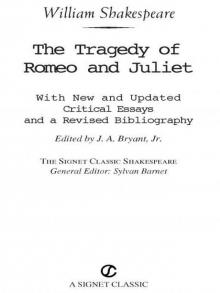 Romeo and Juliet
Romeo and Juliet As You Like It (Folger Shakespeare Library)
As You Like It (Folger Shakespeare Library)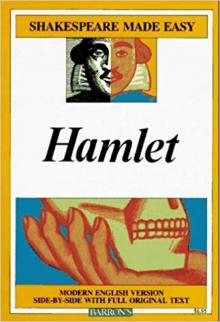 Hamlet
Hamlet Richard II (Folger Shakespeare Library)
Richard II (Folger Shakespeare Library)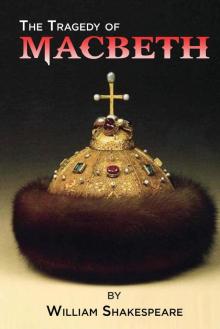 Macbeth
Macbeth Henry V
Henry V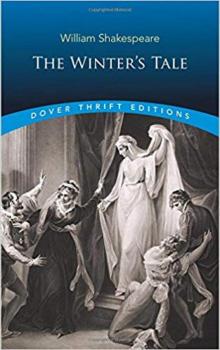 The Winter's Tale
The Winter's Tale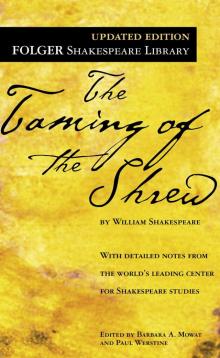 The Taming of the Shrew
The Taming of the Shrew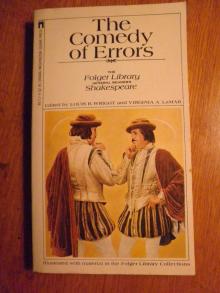 The Comedy of Errors
The Comedy of Errors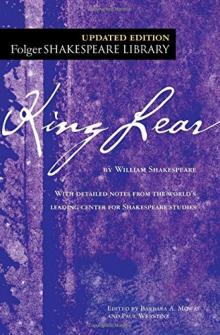 King Lear (Folger Shakespeare Library)
King Lear (Folger Shakespeare Library)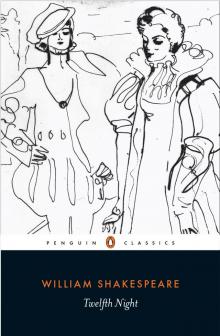 Twelfth Night
Twelfth Night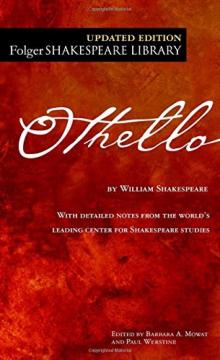 Othello
Othello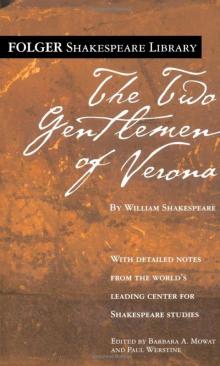 The Two Gentlemen of Verona
The Two Gentlemen of Verona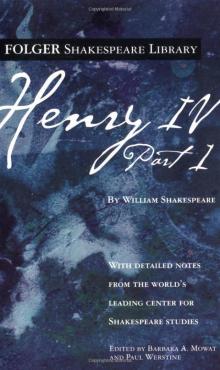 Henry IV, Part 1 (Folger Shakespeare Library)
Henry IV, Part 1 (Folger Shakespeare Library) King John/Henry VIII (Signet Classics)
King John/Henry VIII (Signet Classics)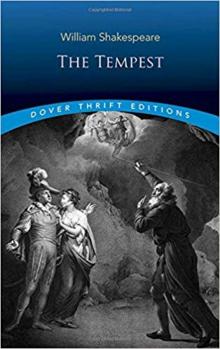 The Tempest
The Tempest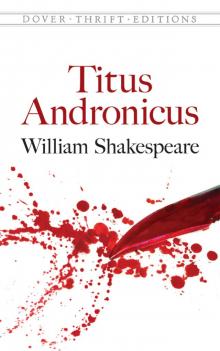 Titus Andronicus (Dover Publications)
Titus Andronicus (Dover Publications)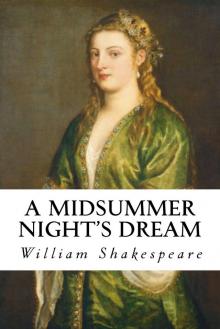 A Midsummer Night's Dream
A Midsummer Night's Dream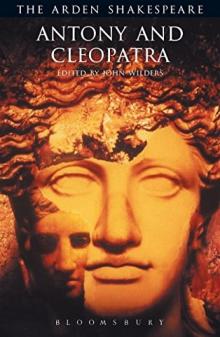 Antony and Cleopatra (Arden Shakespeare: Third Series)
Antony and Cleopatra (Arden Shakespeare: Third Series)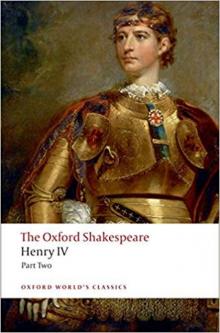 The Oxford Shakespeare: Henry IV, Part 2 (Oxford World's Classics)
The Oxford Shakespeare: Henry IV, Part 2 (Oxford World's Classics)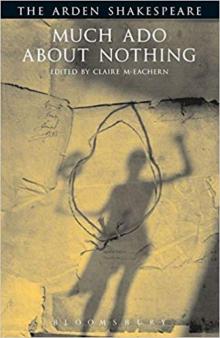 Much Ado About Nothing (Arden Shakespeare: Third Series)
Much Ado About Nothing (Arden Shakespeare: Third Series)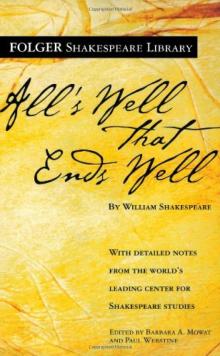 All's Well That Ends Well
All's Well That Ends Well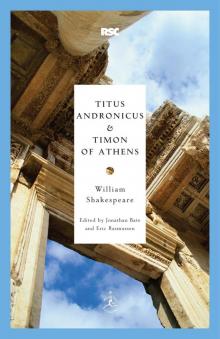 Titus Andronicus & Timon of Athens
Titus Andronicus & Timon of Athens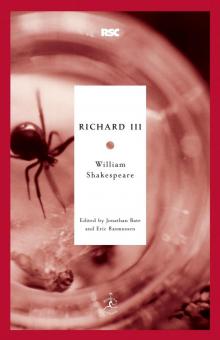 Richard III (Modern Library Classics)
Richard III (Modern Library Classics) Coriolanus
Coriolanus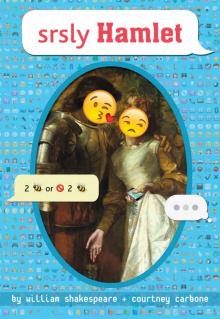 srsly Hamlet (OMG Shakespeare)
srsly Hamlet (OMG Shakespeare) The Merchant of Venice
The Merchant of Venice Richard III
Richard III Richard II
Richard II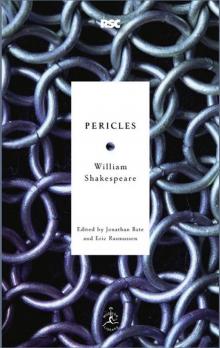 Pericles
Pericles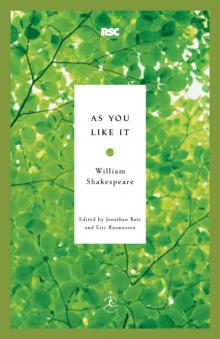 As You Like It
As You Like It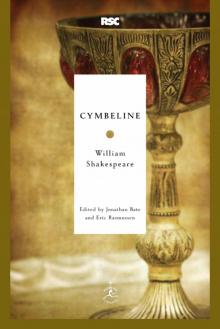 Cymbeline
Cymbeline Alls Wel that ends Well
Alls Wel that ends Well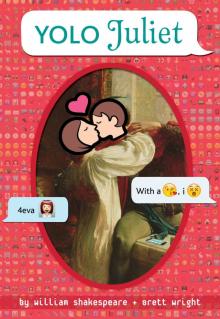 YOLO Juliet
YOLO Juliet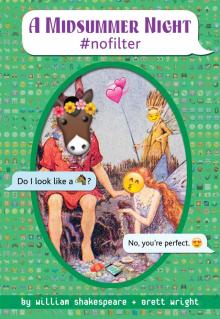 A Midsummer Night #nofilter
A Midsummer Night #nofilter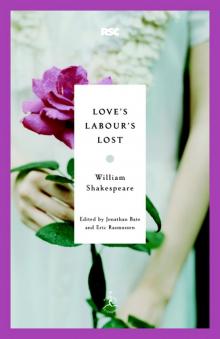 Love's Labour's Lost
Love's Labour's Lost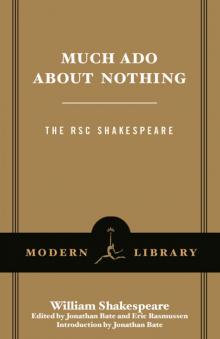 Much Ado About Nothing
Much Ado About Nothing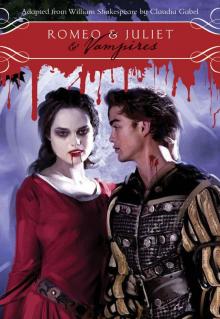 Romeo & Juliet & Vampires
Romeo & Juliet & Vampires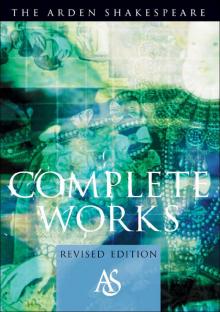 The Arden Shakespeare Complete Works
The Arden Shakespeare Complete Works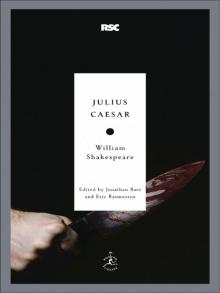 Julius Caesar
Julius Caesar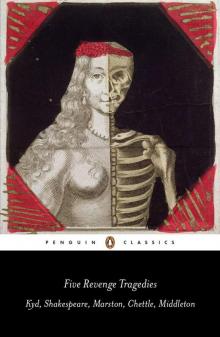 Five Revenge Tragedies: The Spanish Tragedy, Hamlet, Antonio's Revenge, The Tragedy of Hoffman, The Revenger's Tragedy (Penguin Classics)
Five Revenge Tragedies: The Spanish Tragedy, Hamlet, Antonio's Revenge, The Tragedy of Hoffman, The Revenger's Tragedy (Penguin Classics)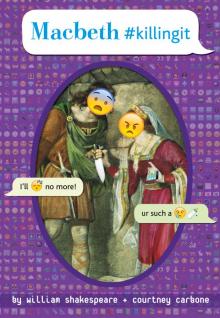 Macbeth #killingit
Macbeth #killingit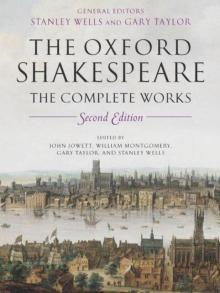 The Oxford Shakespeare: The Complete Works
The Oxford Shakespeare: The Complete Works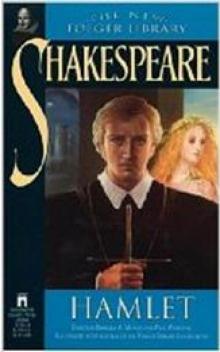 Hamlet, Prince of Denmark (Collins edition)
Hamlet, Prince of Denmark (Collins edition)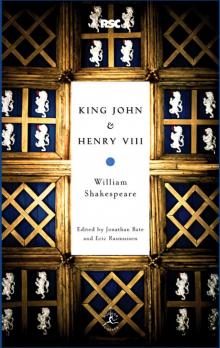 King John & Henry VIII
King John & Henry VIII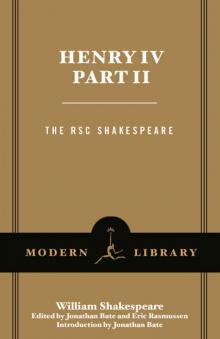 Henry IV, Part 2
Henry IV, Part 2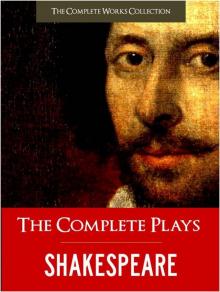 Complete Plays, The
Complete Plays, The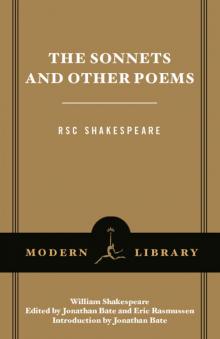 The Sonnets and Other Poems
The Sonnets and Other Poems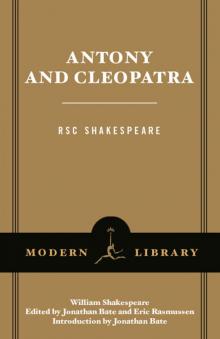 Antony and Cleopatra
Antony and Cleopatra Henry IV, Part 1
Henry IV, Part 1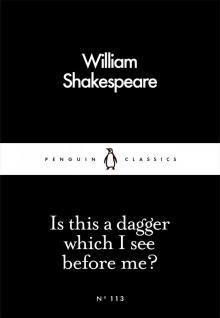 Is This a Dagger Which I See Before Me?
Is This a Dagger Which I See Before Me? The Complete Works of William Shakespeare In Plain and Simple English (Translated)
The Complete Works of William Shakespeare In Plain and Simple English (Translated)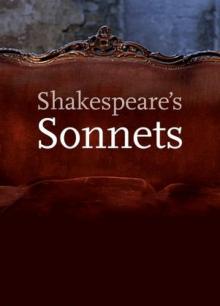 The Sonnets
The Sonnets